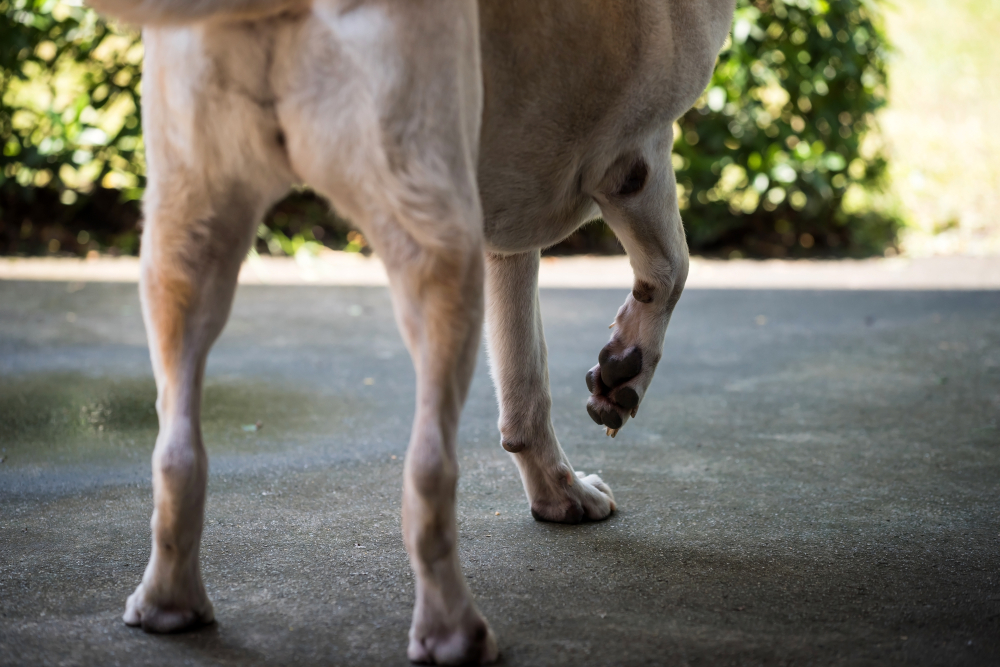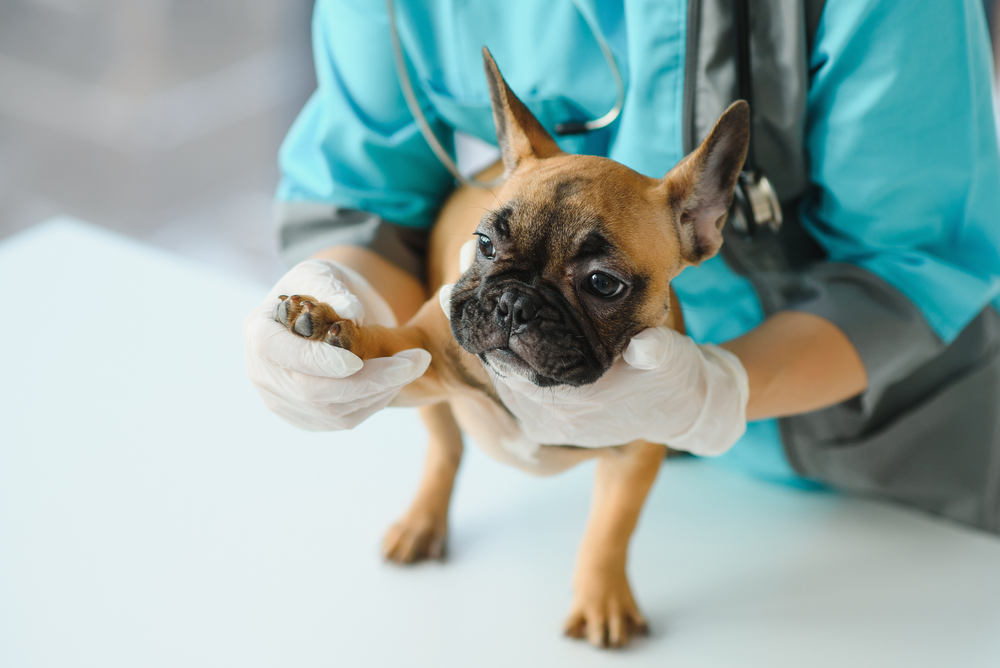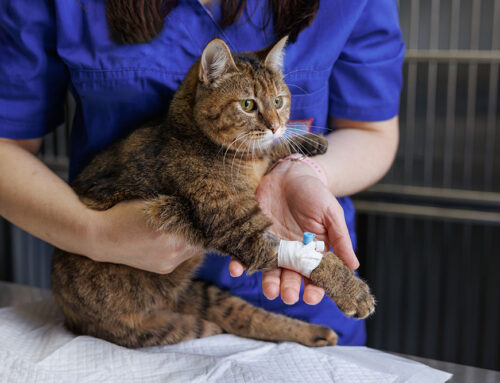Because of their active nature, dogs commonly develop a limp. Some dogs recover with extra couch time, while other cases require surgical repair or correction. To learn the common reasons dogs limp, read our Memorial Villages Animal Hospital team’s guide on canine lameness, and how to help your pooch heal.
Common causes of limping in dogs
The reasons your dog may be limping are innumerable, and—without advanced diagnostic testing—the cause can be difficult to determine. Some limping causes are more serious than others and require immediate veterinary treatment, so determining the underlying cause is critical for your dog’s prognosis. Some of the most common canine lameness causes include:
- Osteoarthritis — While osteoarthritis is more common in older dogs, young dogs can also develop the condition as the cushioning joint cartilage between bones degrades. As bone grinds against bone, painful inflammation develops, along with bone spurs.
- Limb fracture — Most fractures cause pets to be completely nonweight-bearing on the affected limb. However, a tiny fracture in a toe may allow your dog to toe touch as they walk.
- Muscle sprain or strain — Developing acutely after intense activity, muscle injuries typically resolve with rest.
- Ligament tear — The cranial cruciate ligament (CCL) provides knee stability, so dogs with a torn CCL limp more because their knee gives out, rather than because of extreme pain.
- Nail injury — Torn or broken nails can expose the sensitive quick inside the tough keratin, causing your dog to hobble on the affected paw.
- Insect bite or sting — If your dog steps on a wasp or spider and suffers a sting or bite, the inflammation and associated pain can make the paw too sensitive to bear much body weight.
- Tick-borne diseases — Lyme disease is a common tick-borne disease that causes the hallmark sign of shifting-leg lameness. Limping can come and go, and—throughout the course of your dog’s illness—they switch which leg they favor.
- Trauma — Any traumatic event that causes a wound, such as a dog bite, puncture, or scrape on a limb or paw, can make your pooch limp.
- Developmental disorders — Growing puppies can experience panosteitis, a painful inflammation of the long leg bones. Anatomic defects, such as a luxating patella or hip or elbow dysplasia, can also cause instability or discomfort while walking, causing a limp.
- Nervous system damage or disorder — Any injury to the nerve bundles, such as the brachial plexus, can make walking difficult or impossible. Nervous system disorders can also prevent nerve impulses from reaching the limbs, causing an uneven gait or preventing movement completely. Intervertebral disc disease (IVDD) is a common issue that can cause a dog to have difficulty walking, or may cause complete paralysis in the hind end.
- Cancer — Soft tissue or bone cancer on or near the limbs or spine can create an abnormal gait that ranges from a slight limp to a complete inability to bear weight.

At-home treatment for your limping dog
Many canine limping causes require veterinary treatment. Before beginning any at-home treatment for your dog’s limp, contact our Memorial Villages Animal Hospital team to ensure at-home treatment is safe. However, if your dog sprained or strained a muscle, try the following recovery methods:
- Exercise restriction — Keeping your dog from being too active is key to their recovery. Walk them outside on a leash to go to the bathroom, then bring them straight back indoors to rest on their bed. To prevent them from being too active, some dogs need to be kept confined to a small room or kennel while they are recovering.
- Cold and heat therapy — Acute muscle strains can benefit from cold and heat therapy. Typically, a cold compress is applied to the affected area for 15 to 20 minutes several times per day for the first 3 days. Then, do the same, applying heat. Chronic conditions, such as osteoarthritis, may also respond well to this therapy.
- Mobility aids — Devices, such as harnesses and toe grips, can help your dog get up and keep their balance while walking, preventing further injury.
When to seek veterinary treatment for your limping dog
Not all canine limping requires immediate veterinary treatment. If possible, record your dog limping at home. Oftentimes, dogs become so excited or anxious at the veterinary hospital that they walk normally during an appointment, causing your veterinarian difficulty in trying to pinpoint the problem. However, your dog needs professional care if they exhibit these conditions:
- Appears unwell
- Has a wound
- Is in obvious pain
- Has not improved in 24 hours
If your dog has developed a limp that does not improve with rest, they need veterinary care. Schedule an appointment with our Memorial Villages Animal Hospital team.









Leave A Comment